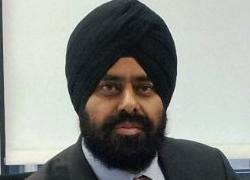As communications service providers (CSPs) look to create an omni-channel for CEM, they need to introduce new processes, systems and skills into their businesses. “All CSPs want an omni-channel, but many are cursed with an ominous channel,” says Guru Grewal, head of Virtusa’s telecoms solutions department.
Grewal’s job is to help CSPs to harmonise their people, processes and systems so that everyone knows their position and their team customer experience management (CEM) formation keeps its shape. In CSP terms, that means that the people in the call centre have an almost telepathic understanding with the staff in the shops, the engineers in the field and the machines that automate responses.
For this reason, the management of all these players is a top down job. The former player-coaches – such as the chief technical officer or the marketing boss – are too involved in their own game to take a managerial overview. For this reason, the job of CEM is now run by someone upstairs – in a more directorial role.
“It is essential that the CTO and the CMO align their strategies to ensure that the customer is the overall champion,” says Niamh Dundon, senior marketing manager at Openet. That alignment must come from on high, Dundon argues.
That means someone has to bash these heads together, says David Heaps, the senior vice president of corporate strategy at CSG International. “CEM needs to be driven from the very top of the organisation,” says Heaps, “because the network is only one factor.”
The job has become complex because there are so many elements involved, so CEM is no longer a project or a business division but a complete change of culture, according to René Tonon, Sysmech’s business development manager. “Hanny Moneim [the head of customer care at Vodafone Egypt] recently explained at a CEM conference that it took over three years for the whole business culture to change at Vodafone Egypt.”
Since the cultural elements – the people and processes – are possibly too complex to outline here, it might be worth examining the importance of harmonising systems.

Anyone taking an overview of CEM will need to join the dots between as many operational and technology systems as possible to get the fullest perspective on what customers are doing, says Vincent Rousselet, market insight vice president at Amdocs. “Outlook, VPN portal and Skype might be the daytime channel but it’s Instagram, WhatsApp or SnapChat at home,” he says. In other words, managing the subscribers calls for the capacity to adapt.
As CSPs review their technology options for tackling CEM, most are looking at software defined networking (SDN) and network functions virtualisation (NFV) to create service continuity, says Gabriele Di Piazza, the senior vice president of marketing at Guavus. The other plank of their technical strategy invariably involves big data open frameworks – like Apache Spark – to give them the real-time processing of data.
So they have the radar, but will they really have an idea of what’s going on out there?
If big data analytics can create a picture of the customer experience right down to the individual, then yes, says Di Piazza. In this case the CEM tools are essentially acting as the glue that holds all the services together. “Speed is of the essence. If there is a problem on the network, it needs to be found fast and other areas of the business – such as customer care – need to be informed,” says Di Piazza.
Technically, the challenge is more straightforward, albeit ominous. There will be intelligence feeding in from smart devices and data from apps, sensors, RFID tags, internet browsing and social media. “The sheer volume and diversity of the contextual and signalling data available to a CSP has increased the CEM undertaking significantly,” says Dave Peters, the CEO at Emagine International, which aims to provide the adaptive contextual marketing software to CSPs.
Whether companies have the right company culture to team-up and act as one will be another question.
Market analyst Gartner recently compared the CEM skills of CSPs and BT and EE achieved unenviable ratings. The ratings for the whole sector weren’t generally brilliant.

CSPs aren’t great role models when it comes to positive customer experiences, says Jennifer Fellows, the senior vice president of marketing at MDS. But they need to be. “In the new customer experience economy, they need to move their focus and involve customers up front in their product development. Today’s millennials will champion the brands that take time out to understand what they value,” she says.

To be fair CSPs have improved a lot, says Mohammed Sha, director of international marketing communications at AsiaInfo. The trouble is, customers’ expectations and requirements have raced past. “While investment in networks and infrastructure have helped, CSPs are still struggling with offering a seamless omni-channel experience,”says Sha. “The good news is there’s some innovative omni-channel technology coming on the market soon.”






